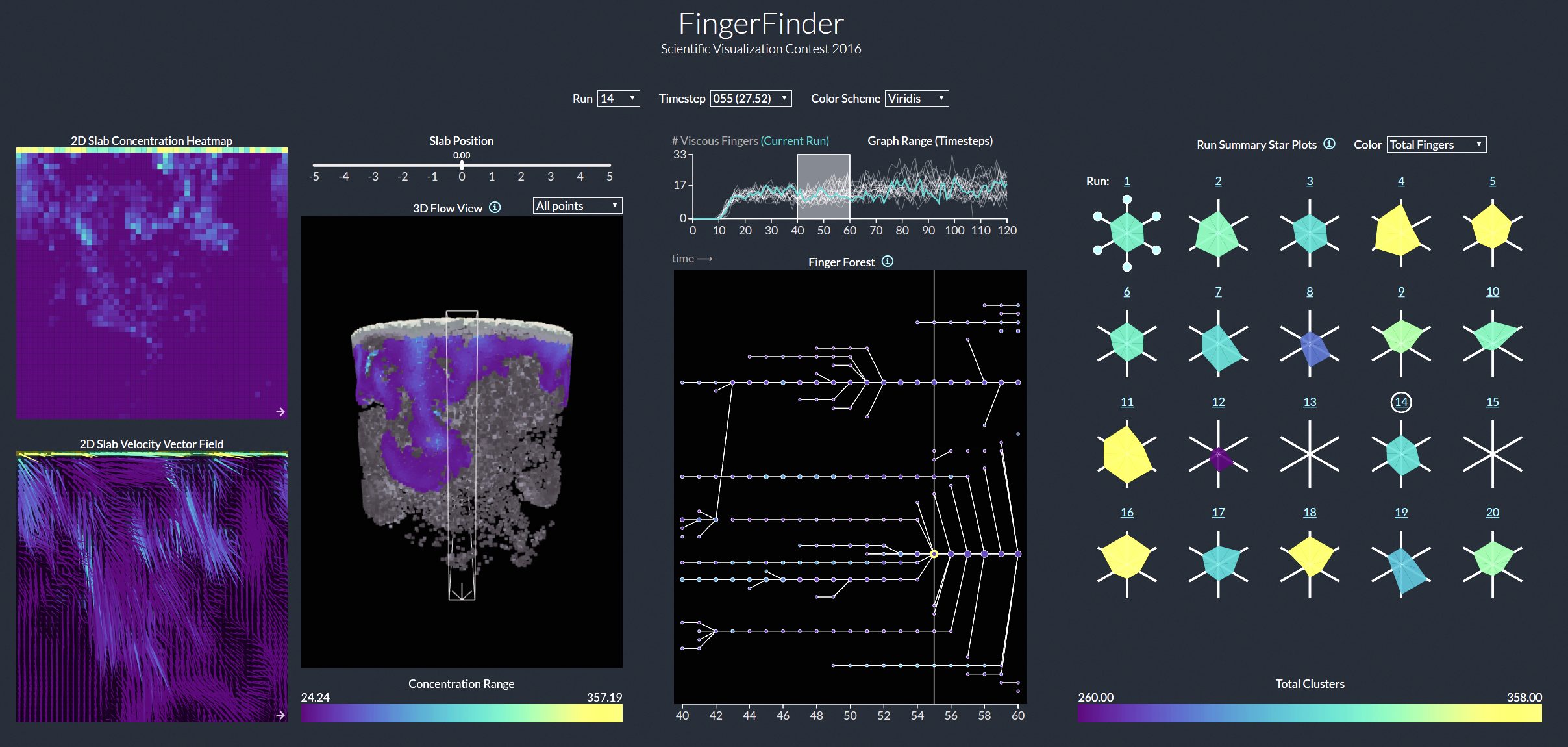Details-First, Show Context, Overview Last: Supporting Exploration of Viscous Fingers in Large-Scale Ensemble Simulations
January 1st, 2019
Categories: Applications, Visual Analytics, Visual Informatics

Authors
Luciani, T., Burks, A., Sugiyama, C., Komperda, J., Marai, G.E.About
Visualization research often seeks designs that first establish an overview of the data, in accordance to the information seeking mantra: “Overview first, zoom and filter, then details on demand”. However, in computational fluid dynamics (CFD), as well as in other domains, there are many situations where such a spatial overview is not relevant or practical for users, for example when the experts already have a good mental overview of the data, or when an analysis of a large overall structure may not be related to the specific, information-driven tasks of users. Using scientific workflow theory and, as a vehicle, the problem of viscous finger evolution, we advocate an alternative model that allows domain experts to explore features of interest first, then explore the context around those features, and finally move to a potentially unfamiliar summarization overview. In a model instantiation, we show how a computational back-end can identify and track over time low-level, small features, then be used to filter the context of those features while controlling the complexity of the visualization, and finally to summarize and compare simulations. We demonstrate the effectiveness of this approach with an online web-based exploration of a total volume of data approaching half a billion seven-dimensional data points, and report supportive feedback provided by domain experts with respect to both the instantiation and the theoretical model.
Index Terms - theory, visualization design, details-first model, discourse paper, computational fluid dynamics
See a video on this project.
Resources
Citation
Luciani, T., Burks, A., Sugiyama, C., Komperda, J., Marai, G.E., Details-First, Show Context, Overview Last: Supporting Exploration of Viscous Fingers in Large-Scale Ensemble Simulations, IEEE Transactions on Visualization and Computer Graphics (Proceedings of the Visual Analytics Science and Technology / Information Visualization / Scientific Visualization 2018), vol 25, no 1, pp. 1-11, January 1st, 2019.